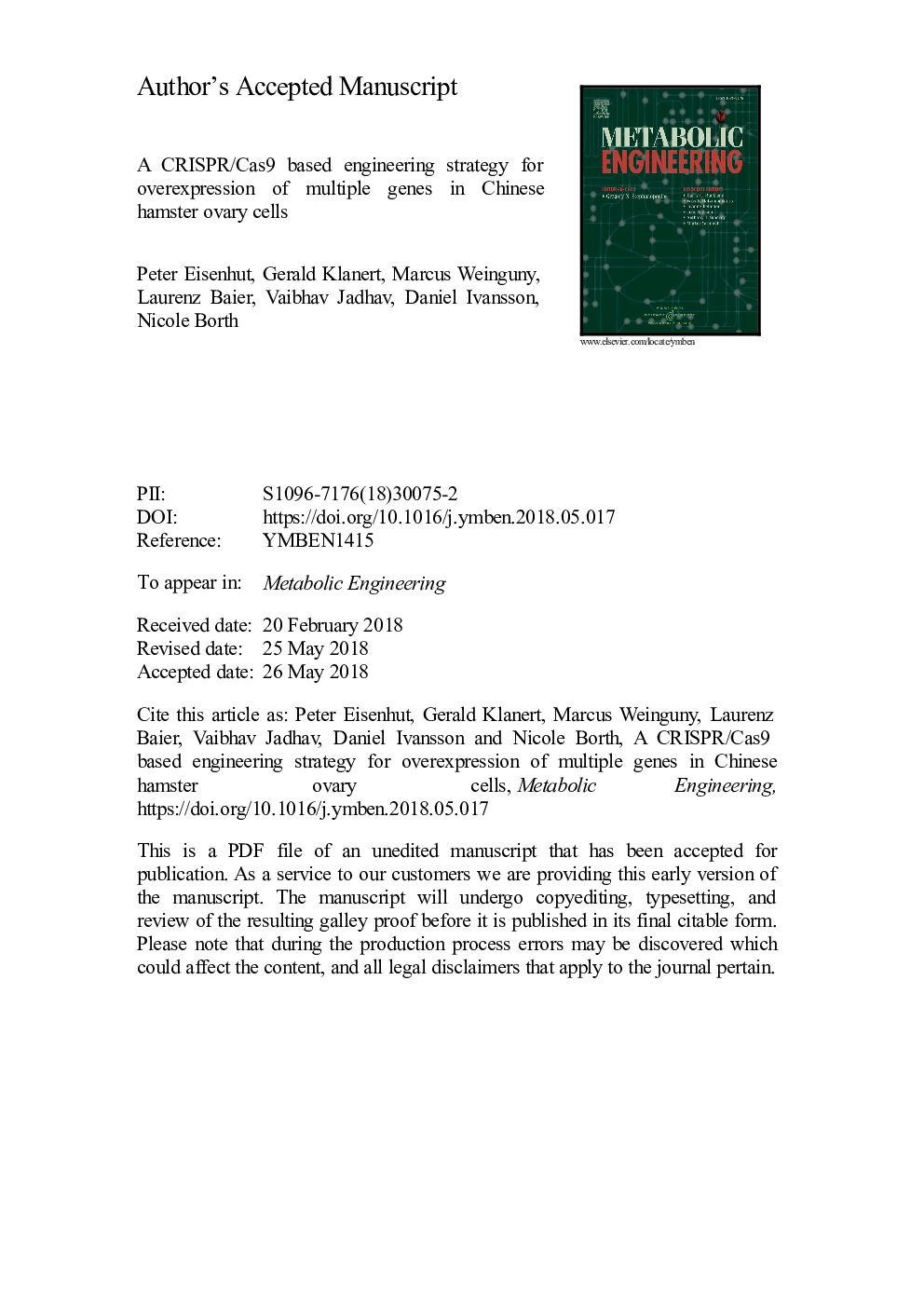| Article ID | Journal | Published Year | Pages | File Type |
|---|---|---|---|---|
| 6494038 | Metabolic Engineering | 2018 | 36 Pages |
Abstract
Manipulation of multiple genes to engineer Chinese Hamster Ovary (CHO) cells for better performance in production processes of biopharmaceuticals has recently become more and more popular. Yet, identification of useful genes and the unequivocally assessment of their effect alone and in combination(s) on the cellular phenotype is difficult due to high variation between subclones. Here, we present development and proof-of-concept of a novel engineering strategy using multiplexable activation of artificially repressed genes (MAARGE). This strategy will allow faster screening of overexpression of multiple genes in all possible combinations. MAARGE, in its here presented installment, comprises four different genes of interest that can all be stably integrated into the genome from one plasmid in a single transfection. Three of the genes are initially repressed by a repressor element (RE) that is integrated between promoter and translation start site. We show that an elongated 5â²-UTR with an additional transcription termination (poly(A)) signal most efficiently represses protein expression. Distinct guide RNA (gRNA) targets flanking the REs for each gene then allow to specifically delete the RE by CRISPR/Cas9 and thus to activate the expression of the corresponding gene(s). We show that both individual and multiplexed activation of the genes of interest in a stably transfected CHO cell line is possible. Also, upon transfection of this stable cell line with all three gRNAs together, it was possible to isolate cells that express all potential gene combinations in a single experiment.
Keywords
Related Topics
Physical Sciences and Engineering
Chemical Engineering
Bioengineering
Authors
Peter Eisenhut, Gerald Klanert, Marcus Weinguny, Laurenz Baier, Vaibhav Jadhav, Daniel Ivansson, Nicole Borth,
